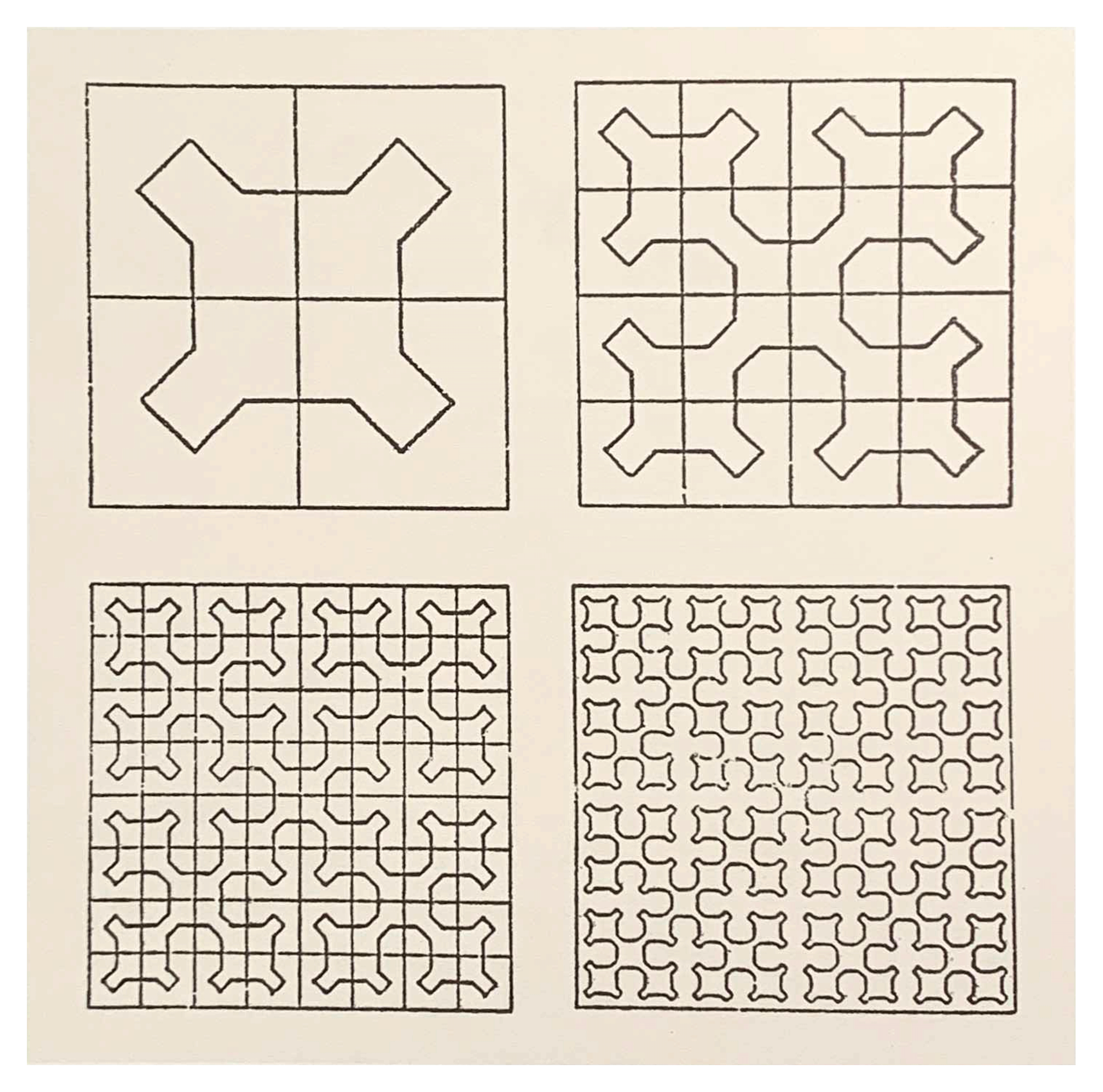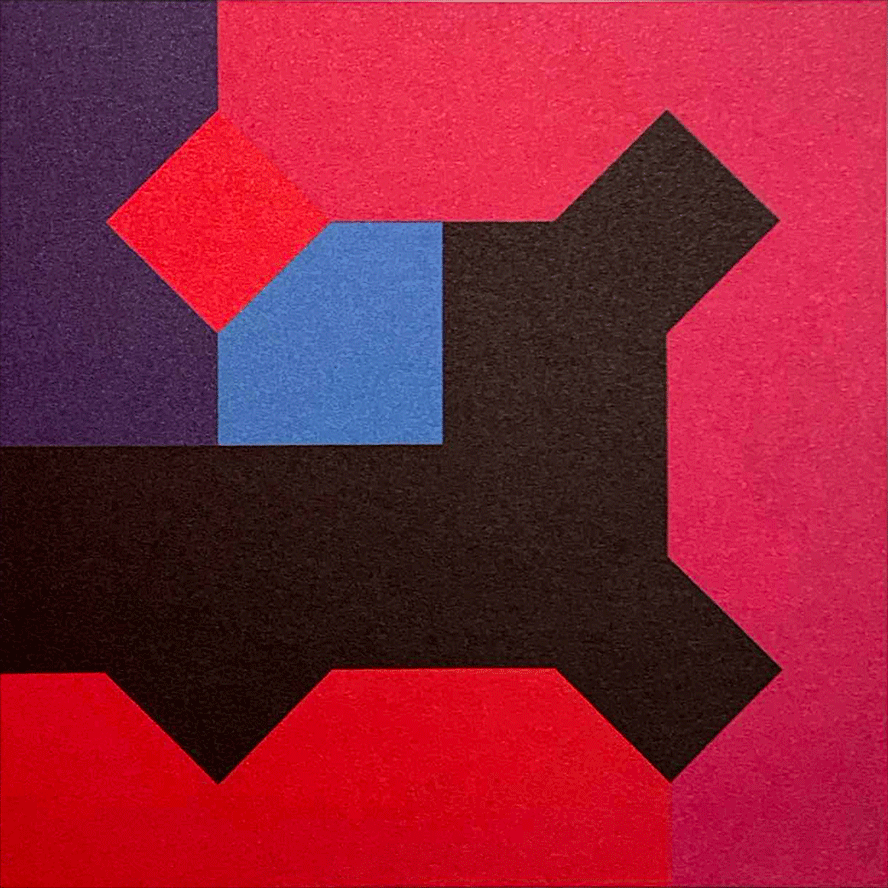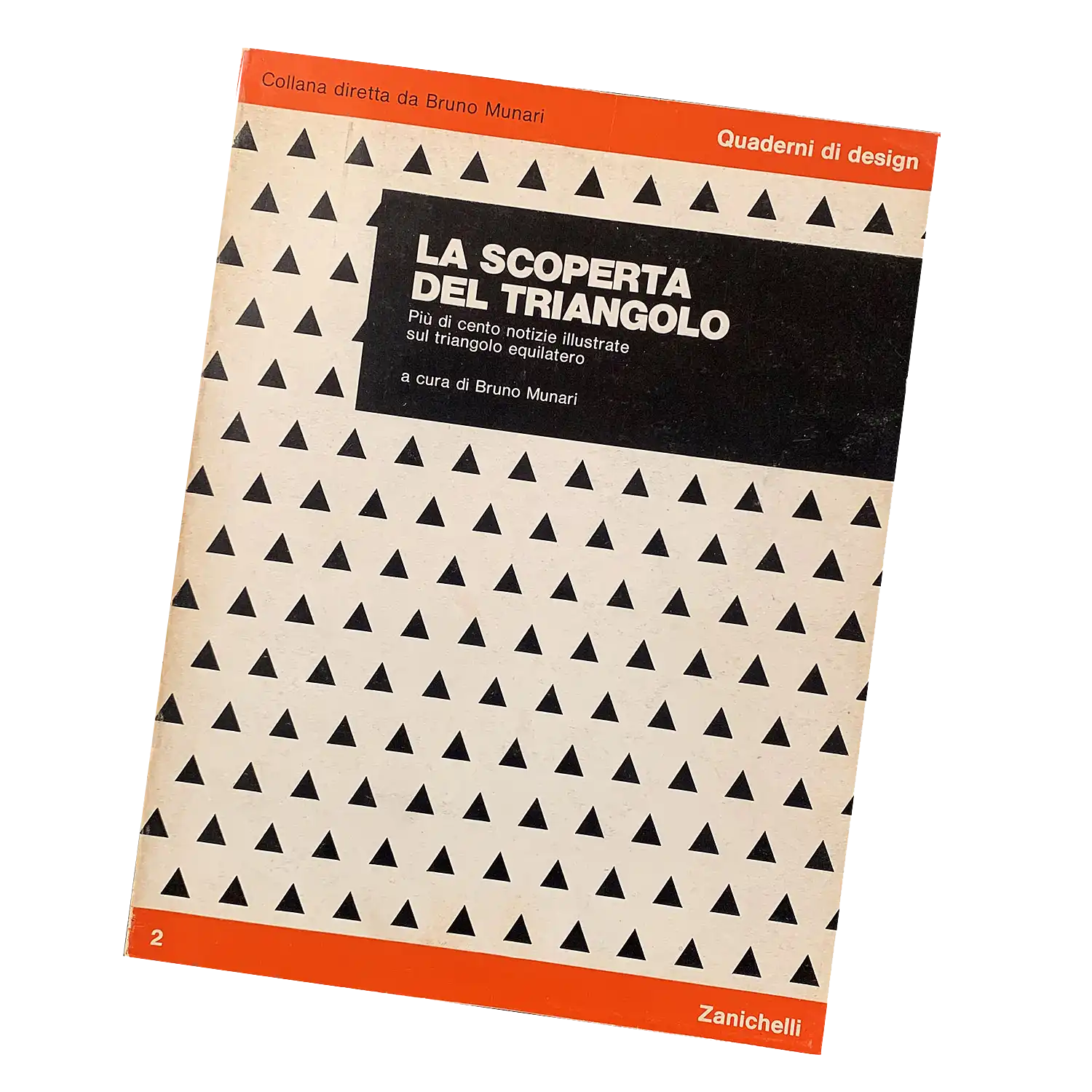Italian artist and designer Bruno Munari was also fascinated by Peano’s curious curve. This space-filling curve is a mathematical absurdity — a one-dimensional entity passing as a two-dimensional figure. I'd guess it was this paradox that drew Munari to the form starting in the late 1960s. Here’s a set of drawings attempting to understand the form [↓]:

Munari called these specific algebraic-geometric constructions "pathological curves." He began to explore them in his work. In December 1969 Munari made a print for La Rinascente department store in Milan called Arbitrary Variations on the Peano Curve. I expect “Arbitrary” is the key word here. Soon he started making paintings and prints based on Peano curves where he indulged his instinct to oppose the “scientific nature” of the mathematical forms with an irrational component:
Munari continues:
He made a set of prints for Danese Milano based on the images. These are his color studies which give some slight insight to the process. And here is a finished picture [↓]. I love these so much.

All of this was research, design research, for Munari. Design research was an active concern for him from the 1960s onwards. In Codice Ovvio (1971), he described the research process:
About ten years later, he became editor of a publication series which provided a platform for this work. From 1976, he was director of Quaderni di design (Design Notebooks) published by Zanichelli. It’s an exceptional collection, each issue presenting one single design research project. The second issue presented one of Munari’s own projects, The Discovery of the Triangle [↓]:

Continues in class . . .

Munari called these specific algebraic-geometric constructions "pathological curves." He began to explore them in his work. In December 1969 Munari made a print for La Rinascente department store in Milan called Arbitrary Variations on the Peano Curve. I expect “Arbitrary” is the key word here. Soon he started making paintings and prints based on Peano curves where he indulged his instinct to oppose the “scientific nature” of the mathematical forms with an irrational component:
My proposal, absolutely superfluous to mathematical speculation, but curious from an aesthetic point of view, is to place certain colors in the areas delimited by the line
Munari continues:
I wanted to try to insert in this very rigorous, mathematical structure an emotional fact based instead on the sensitivity of color. I asked myself: what happens if I insert a fact of chromatic sensitivity into a strictly logical problem? The truth that color finds its own structure even if it has an emotional origin because Peano can explain its structure with logic while I cannot explain in words what sensitivity is. So it is a relationship between sensitivity, intuition and logic.
He made a set of prints for Danese Milano based on the images. These are his color studies which give some slight insight to the process. And here is a finished picture [↓]. I love these so much.

All of this was research, design research, for Munari. Design research was an active concern for him from the 1960s onwards. In Codice Ovvio (1971), he described the research process:
Unlike artists, designers . . . do not come up with marvelous little sketches that someone else will later reproduce, they experiment with optical, physical, geometric, topological or mechanical phenomena . . . fine-tuning their components in order to maximize their effect, researching the material best suited to guarantee a maximum of communication at the lowest cost. They subsequently develop the best mechanical technique and finally create a prototype, which is not an artist’s unique masterpiece, but simply the model for the whole series. Whereas in art, reproductions are always inferior to the original, in this case the prototype is always inferior to the final products.
About ten years later, he became editor of a publication series which provided a platform for this work. From 1976, he was director of Quaderni di design (Design Notebooks) published by Zanichelli. It’s an exceptional collection, each issue presenting one single design research project. The second issue presented one of Munari’s own projects, The Discovery of the Triangle [↓]:

Continues in class . . .
February 12, 2024
The discovery of the triangle
Readings
The Discovery of the Triangle (Bruno Munari)
The Design of Research (Bruno Munari)
Resources
Visual Research, Sturctures, Design (Bruno Munari)
Mun Art, the comprehensive Munari archive
The Topology Films Project, Space-filling Curves
Quaderni di Design
Assignment
Research, Reconsider, Repeat (proposed subjects)
The discovery of the triangle
Readings
The Discovery of the Triangle (Bruno Munari)
The Design of Research (Bruno Munari)
Resources
Visual Research, Sturctures, Design (Bruno Munari)
Mun Art, the comprehensive Munari archive
The Topology Films Project, Space-filling Curves
Quaderni di Design
Assignment
Research, Reconsider, Repeat (proposed subjects)